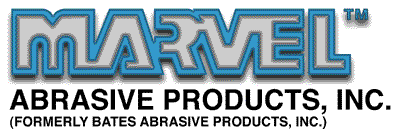

The surface condition of any part or product, whether for appearance or functionality, is a vital factor in meeting today's exacting expectations and competitive standards. Manufacturers worldwide devote significant attention to deburring, finishing and polishing systems to produce the results customers demand. Today many have learned to rely on a new category, non-woven abrasives. The unique three-dimensional construction of non-woven abrasives provides functional characteristics and a diverse range of performance capabilities that provide distinct advantages over traditional coated abrasives in many applications.
By varying the dimension of the synthetic fibre, the firmness, or flexibility of the material can be manipulated.
The size of the abrasive grain will influence the aggressiveness of the cutting action.
This agent acts to bond the fibre and abrasive grain together and ensures the structural integrity of the finished product.
The way these three components are combined creates a variety of versatile abrasive tools capable of producing a wide spectrum of surface conditions and finishes. The characteristics of non-woven material have made it the fastest growing abrasive product today.
One of the factors that most directly impacts the performance and ultimate success of any abrasive product is the use of the right surface speed for the application. Lower speeds are generally suggested for creating uniform satin finishes and for working on composites and soft materials such as aluminum. High speeds are recommended for deburring, and for removing and blending surface imperfections when faster cut rates and finer finishes are required.
| Application | Surface Feet Per Minute |
|---|---|
| Decorative Finishing | 500 - 3000 |
| Composites and other soft materials | 1200 - 3000 |
| Woodworking | 1800 - 3000 |
| Cleaning and surface conditioning | 2000 - 3000 |
| Preparation for polishing | 2000 - 6000 |
| Removal of surface oxides and discoloration | 4000 - 6500 |
| Deburring and edge radiussing | 4500 - 6500 |
Surface blending and polishing
|
6000 - 7000 6500 - 9000 |
| Cutdown prior to buffing | 6000 - 8000 |
Non-woven materials should not be used around or exposed to organic solvents, strong acids and alkali solutions.
Although Marvel non-wovens can be used wet or dry, the use of lubricants and/or coolants can enhance performance variables such as product life, cut rate and heat generation. Typical solvents and/or coolants include water, oil and grease. We suggest the use of our Marvelube product, whose features and benefits are described in our catalog.
| RPM | Diameter | |||||||
|---|---|---|---|---|---|---|---|---|
| 2" | 3" | 4" | 6" | 8" | 10' | 12" | 15" | |
| 1000 | 525 | 785 | 1050 | 1575 | 2100 | 2625 | 3150 | 3925 |
| 1500 | 785 | 1175 | 1575 | 2350 | 3150 | 3925 | 4725 | 5900 |
| 1750 | 915 | 1375 | 1850 | 2750 | 3650 | 4550 | 5500 | 6800 |
| 2500 | 1300 | 1950 | 2625 | 3925 | 5250 | 6550 | 7850 | 9825 |
| 3000 | 1575 | 2350 | 3125 | 4725 | 6275 | 7850 | 9425 | 11,775 |
| 3450 | 1800 | 2700 | 3600 | 5400 | 7200 | 9000 | 11,000 | 13,500 |
| 4000 | 2100 | 3150 | 4175 | 6275 | 8375 | 10,475 | -- | -- |
| 6000 | 3125 | 4700 | 6275 | 9425 | -- | -- | -- | -- |
| 10,000 | 5250 | 7850 | 10,500 | -- | -- | -- | -- | -- |
| 15,000 | 7850 | 11,775 | 15,750 | -- | -- | -- | -- | -- |
| 20,000 | 10,450 | 15,700 | 20,950 | -- | -- | -- | -- | -- |
Note: For Speeds and diameters not shown use this equation to calculate any surface speed. FPM = Pie x Dia. (Inches) x RPM/12
Marvel Abrasive Products, Inc.
6230 South Oak Park Ave.
Chicago, IL 60638
(800) 621-0673; Fax: (800) 701-0187
E-mail: marvelabrasives@worldnet.att.net